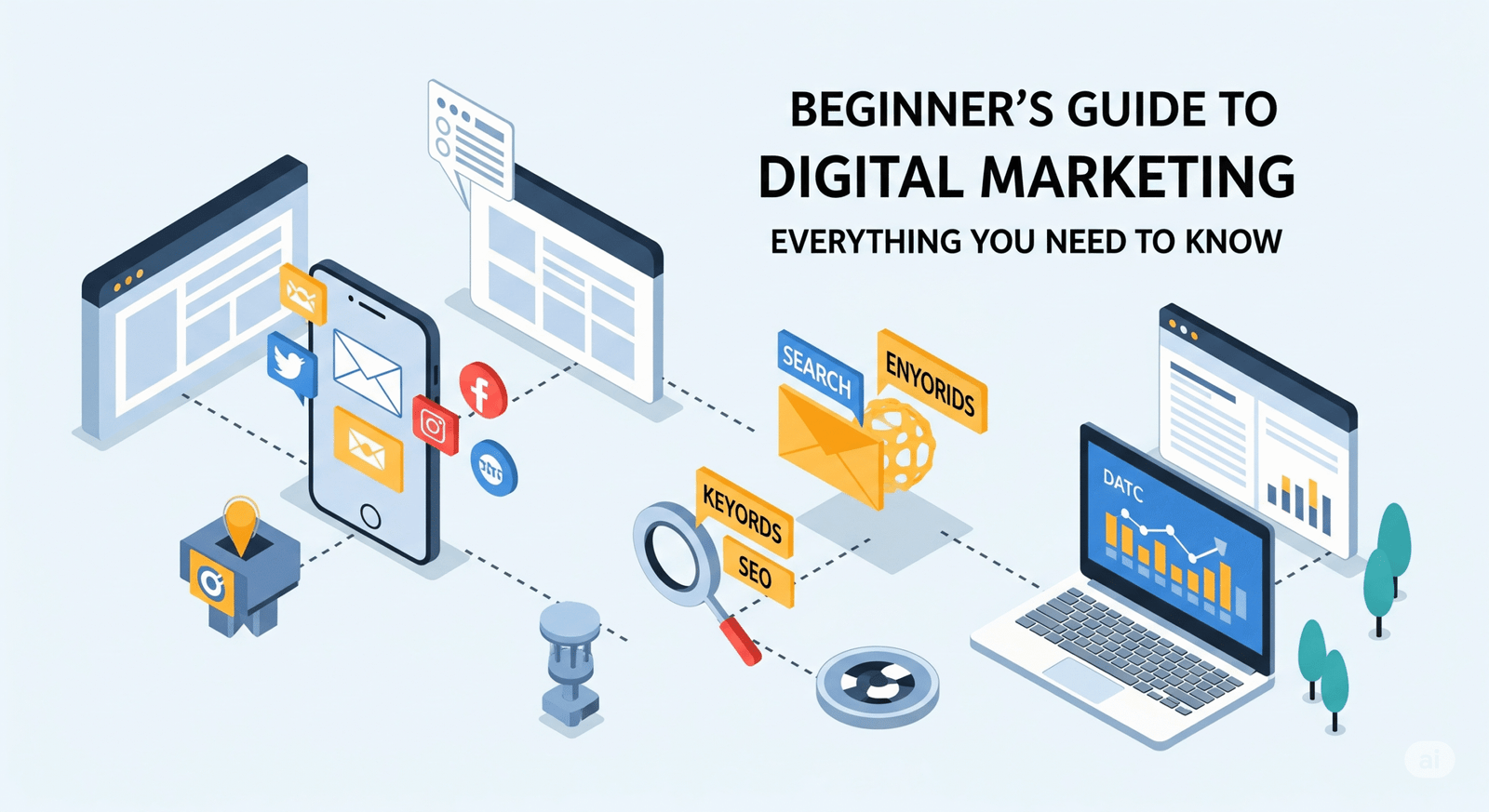In today’s hyper-connected world, marketing has moved far beyond flyers, billboards, and TV ads. Whether you’re launching a new business, starting your career in marketing, or just curious about how brands grow online, this Beginner’s Guide to Digital Marketing will give you everything you need to get started.
What Is Digital Marketing?
Digital marketing refers to the promotion of products or services using digital channels such as websites, search engines, social media, email, and mobile apps. Unlike traditional marketing, it allows real-time interaction, measurable results, and cost-effective campaigns.
🆚 Traditional vs. Digital Marketing:
- Traditional: TV, radio, print, outdoor ads
- Digital: Google Ads, Instagram, SEO, YouTube
Why go digital? It’s faster, more targeted, data-driven, and budget-friendly.
Core Components of Digital Marketing
Understanding the major types of digital marketing is key to choosing the right strategy for your goals:
1. Search Engine Optimization (SEO)
Improves your website’s visibility in search engine results (Google, Bing).
2. Content Marketing
Creates valuable content (blogs, videos, infographics) to attract and retain an audience.
3. Social Media Marketing (SMM)
Promotes brands through platforms like Instagram, Facebook, LinkedIn, and Twitter.
4. Pay-Per-Click Advertising (PPC)
Paid ads on Google or social platforms that generate instant traffic.
5. Email Marketing
Sends targeted emails to nurture leads and retain customers.
6. Affiliate Marketing
Earns commission by promoting other businesses’ products.
7. Influencer Marketing
Leverages individuals with online influence to promote products.
8. Mobile Marketing
Targets users on smartphones via SMS, mobile apps, and responsive ads.
How Digital Marketing Works
Digital marketing isn’t just about promotion—it’s a journey. Here’s how it flows:
🌀 Marketing Funnel Stages
- Awareness – Attract visitors through blogs, SEO, or ads
- Consideration – Build trust via reviews, social proof, and email sequences
- Conversion – Encourage purchase or action
- Loyalty – Retain users with offers, newsletters, and great service
Marketers use tools like Google Ads, CRM platforms, and analytics to plan, track, and optimize these stages.
Key Digital Marketing Channels
Digital marketing uses various platforms to reach different audiences:
- Website & Blog – Your digital home base
- Social Media – Connects brands with customers
- Search Engines – Drives organic and paid traffic
- Email – Communicates directly and personally
- Mobile – Reaches users anytime, anywhere
Basic Tools Every Beginner Should Know
You don’t need to master everything on day one. Start with these beginner-friendly tools:
- Google Analytics – Track website visitors and user behavior
- Canva – Create social media graphics and marketing materials
- Mailchimp – Automate email campaigns
- SEMrush / Ubersuggest – Do keyword research and SEO audits
- Buffer / Hootsuite – Schedule and manage social media posts
Common Terms and Metrics
Here are some essential metrics and terms you’ll encounter:
- CTR (Click-Through Rate) – % of people who click your link
- CPC (Cost Per Click) – How much you pay per ad click
- Conversion Rate – % of users who take the desired action
- Bounce Rate – % of visitors who leave without interacting
- ROI (Return on Investment) – Profit gained vs. money spent
Understanding these helps you measure success and improve strategy.
How to Start Learning Digital Marketing
You don’t need a marketing degree to begin. Here’s how you can start:
- Free Courses:
- Watch YouTube tutorials
- Read digital marketing blogs (Neil Patel, Moz, HubSpot)
- Practice with personal projects or internships
Tips for Beginners
- Start Small: Choose one area (like SEO or social media) and build from there
- Stay Updated: Follow marketing trends and algorithm changes
- Build a Presence: Create your own blog or LinkedIn content
- Experiment: Test, learn, and repeat. There’s no one-size-fits-all approach
Conclusion
Digital marketing is an exciting, ever-evolving field filled with opportunities. Whether you’re a small business owner, aspiring marketer, or curious learner, understanding the basics is your first step toward mastering this powerful tool.


